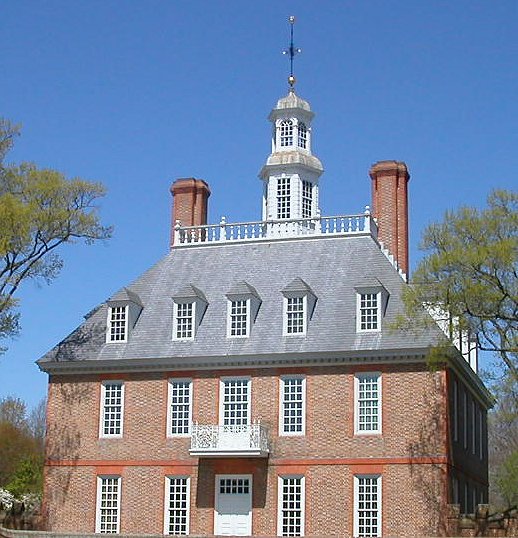
Governor's Palace in Williamsburg, home of colonial
chief executive and head of colonial General Court
(1699-1775)

Governor's Palace in Williamsburg, home of colonial
chief executive and head of colonial General Court
(1699-1775)
In Virginia, the creation of a Grand Assembly in 1619 was not the start of government. The Virginia Company had created a structure for making decisions and appointed people to be the decisionmakers when the first colonists left London in 1606.
However, decisionmakers had lived in Virginia for 15,000 years before Europeans arrived. Bands of Paleo-Indians reconciled differences of opinion and chose where to hunt, gather, and spend the night through a form of governance. When the Jamestown colonists arrived in 1607, they found a paramount chief (Powhatan) appointing the chiefs of over 30 tribes. However, within his territory of Tsenacomoco the Chickahominy tribe was governed by locally-chosen elders ("mungai").
A member of the Pamunkey tribe has commented:1
The "already there" government with Powhatan as paramount chief had evolved in the last 50 years before the English arrived. By 1607, Powhatan ruled over 30 or so different tribes. He had taken control initially over just six tribes, after his father created the first paramount chiefdom on Virginia's Coastal Plan in the mid-1500's.
Consolidation of power by the Algonquian-speaking tribes into paramount chiefdoms, and a similar response by the Siouan-speaking Monacans west of the Fall Line, may have been triggered by the experience of Spanish enslavers sailing along the coastline and then Hernando de Soto leading a military expedition through the Southeast in 1539-1543. The Native American political, military, and religious leaders were powerless to stop the Spanish.
Before the English arrived first in 1584 on the Outer Banks, the Spanish had disrupted Native American society and altered the relationships between groups of people. While Hernando de Soto and later Juan Pardo did not get north to Virginia's Coastal Plain, the residents there would have learned about the dramatic impacts on the tribes to the south. The territories governed by different tribes, and the form of governance within tribal groups, may have been reconstituted in the 50 years before John Smith and others documented the cultures they encountered.
Encyclopedia Virginia list five major reasons for the development of towns and government by paramount chiefdoms after 1300 CE (Common Era):2
The colonial pattern of English government has replaced the Native American patterns used by different tribes. In Virginia today, political authority starts at the state level - not at the local level.
Despite philosophical claims that power belongs to the people and individuals who vote are the foundation of democracy, the reality in Virginia is that government is based on a "top down" rather than "bottom up" structure. Home Owner Associations (HOA's), neighborhood advisory committees, towns, cities and counties may serve as building blocks of democracy, but all of their powers start with a grant of authority by the state's General Assembly.
The authority of town and city councils, Boards of Supervisors in counties, and various regional agencies to make decisions on zoning, road locations, taxes, etc. trickles down from 140 state legislators. The General Assembly grants authority to local governments and regional organizations via laws and charters for municipal governments.
Virginia is not a "home rule" state, where local jurisdictions have authority unless specifically limited by the state legislature or Federal law. Virginia state courts rely upon the Dillon Rule, and judges limit local authority to just those powers that were clearly granted by the General Assembly. Every one of the state's counties, cities, and towns has a state charter, and any attempt to expand local authority requires the General Assembly to pass a new law to revise the charter.
The modern structure of Virginia government reflects over 200 years of adapting to events. Initially the Virginia Company had all power, based on charters from King James I. In 1618 the company relinquished some control, and under the "Great Charter" it allowed colonists to make certain local decisions. After the Third Charter was revoked by King James I, his successors allowed the General Assembly to establish control over land grants, local taxes, regulation of transportation and business, and militia and military actions. Vestries of local Anglican parishes evolved to manage social welfare responsibilities.
The American Revolution revised roles and responsibilities, and in 1786 the Anglican church was formally "disestablished" from having state powers. The 1776 state constitution put some limits on the General Assembly and the 1788 Federal equivalent imposed more constraints, but the state legislature has always retained primacy over all local governments within Virginia.
Virginia declared its independence long before the military success of the American Revolution was made clear at Yorktown in 1781. The first state constitution was adopted in 1776 by the Fifth Revolutionary Convention, the last of the conventions that served between the end of the colonial House of Burgesses/Council of State in 1774 until the establishment of a state General Assembly in 1776. Only the representatives to the Fifth Revolutionary Convention voted on that first constitution. There was no tradition at the time of a written constitution, and certainly no tradition of such a document being ratified by a vote of the people in the counties.

all elected officials in Virginia during the colonial era, the American Revolution, and the Civil War were male
Source: Project Gutenberg, The Road to Independence: Virginia 1763-1783
That constitution centralized all political power in the state government, as the representative of the people. The governor was empowered to appoint the Justices of the Peace for the counties, the key officials who were responsible for local government. Local elections were used to choose representatives to the General Assembly, and under the 1776 constitution state legislators chose the governor and other members of the Executive Branch in Virginia.
The organization chart of state government shows the structure of the three branches. The governor has authority to make numerous appointments, and the Virginia Supreme Court has the authority to rule on the constitutionality of a law. When push comes to shove, however, the General Assembly is the center of political power in Virginia... even though most residents of the state could not name their elected representatives to the House of Delegates or the State Senate.
The General Assembly is the oldest elected representative body in the United States in continuous operation. It started in 1619 as a political unit of the Virginia colony, and became the legislative body of the independent state of Virginia in 1776 (12 years before the Federal Congress was first elected in 1788, after ratification of the Constitution).
Starting in 1619 the General Assembly was composed of the colonial governor, the Council of State, and burgesses elected from towns, hundreds, or other "particular plantations." In 1643, the unicameral General Assembly organized as a bicameral organization. The appointed members of the Council of State served as the "upper" house, and the elected members served as the "lower" House of Burgesses. Laws had to be approved by the governor-general, the Council of State, and the House of Burgesses after 1643 before becoming official.3
The reconstructed Capitol in Williamsburg is an incorrect architectural representation of the building's appearance in 1776. Visitors can see the last page of the House of Burgesses' journal that someone wrote the final word concluding it's operation - Finis. That was done after colonial governor Lord Dunmore sought to block the rebellious House from continuing to meet. Members just adjourned to the local pub and created a new mechanism for representative government.
There were 5 extralegal Virginia Conventions in 1775-76, before Virginia declared its independence and then adopted its first constitution, formally converting from a colony to a state and establishing the General Assembly as the replacement for the House of Burgesses and the Governor's Council.
Government by "town meeting," where 100% of the voters appear at one event to make a decision, is limited to homeowner associations and other small groups in Virginia. For town, city, county, state, and national issues, we have a representative form of government. The boundaries of voting districts identify regions within Virginia that elect representatives to deal with political concerns. Only five officials are elected statewide in Virginia - two U. S. Senators, the Governor, the Lieutenant Governor, and the Attorney General. Virginia also has 11 members in the House of Representatives of the US Congress.
Today there are 140 members in the General Assembly. Virginians can vote for just one state House and just one state Senate candidate. At this time, there are no longer any multi-member districts where voters could elect more than one official to the House of Delegates, or more than one Senate Senator.
There are 40 Senate districts for electing 40 members to the State Senate, and 100 House districts for electing the 100 members to the House of Delegates. Obviously, each member of the State Senate represents more Virginians than a member of the House of Delegates. (Do the math - 6.8 million Virginians divided by 40 Senate districts vs. 6.8 million Virginians divided by 100 House districts...)
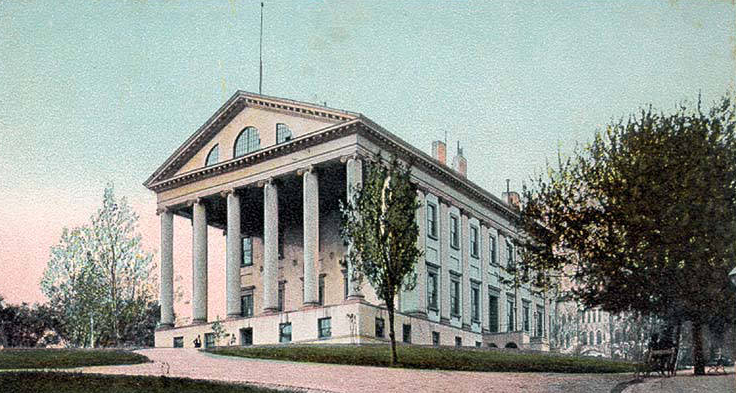
in 1907, the State Capitol building did not have wings attached yet
Source: "Rarely Seen Richmond," Virginia Commonwealth University James Branch Cabell Library Special Collections and Archives, Capitol, Richmond, Virginia
"Lumping" vs. "splitting" political districts is different at some local levels, however. Many counties and cities have defined magisterial districts or wards from which individual county Board of Supervisors or the City Council members are elected. In such counties and cities, local elections are thus comparable to the elections for the General Assembly and voters can choose only one candidate.
However, other counties and cities elect some or all of their politicians "at large". When you enter the polling booth in such areas, you can vote for more than one candidate. The top vote-getters in the entire county/city are elected, regardless of the geographic split of the vote within the county/city.
There are also hybrid systems. In Prince William County, for example, voters across the entire county can chose the chairman of the Board of Supervisors as well as vote for the supervisor in one magisterial district. The county is divided into seven districts, with the chair being the eighth member of the Board of County Supervisors. Candidates for the county-wide seat of Chairman seek support from all voting-age residents across the county, while candidates for each district restrict their campaigning to less than 20% of the county's population... the ones eligible to vote in their particular magisterial district.
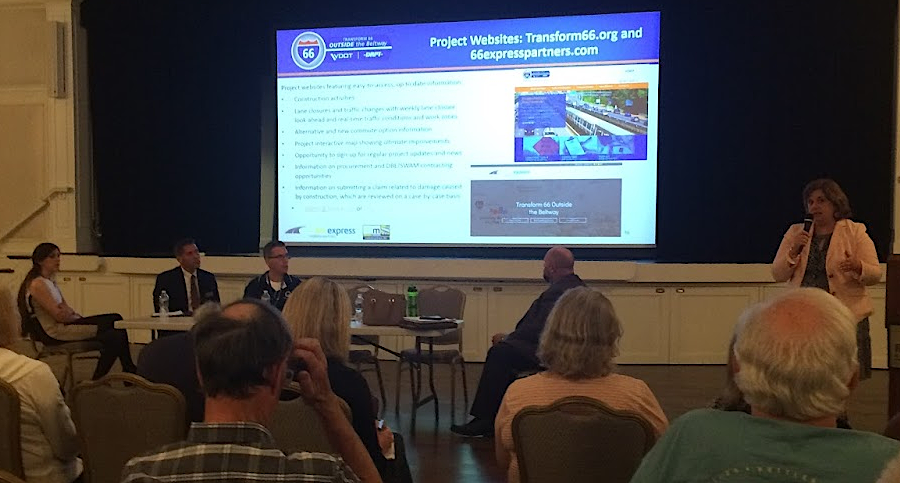
elected officials can get state and local employees to provide information at town halls, which are politically advantageous for incumbents meeting with voters
Such a system discourages election of candidates representing minority views, or minority races and ethnic groups within a county/city. 51% of the voters can elect 100% of the officials. That's how the top 5 state officials are elected.
In Richmond, the city is divided into wards to help ensure the City Council's racial profile reflects the city's racial profile. Forty years ago, when black residents were nearing a majority of the city residents, there were only one or two blacks elected to the City Council. Many political issues in the capital city are still racially-based, but the power of black and white residents has reversed. With a ward system, now it is the white residents in the "west end" who are ensured that their concerns will receive more than token representation.
Roanoke debated this issue, but in 1998 it rejected a proposal to divide the city into 5 wards. The proponents of a ward system suggested electing representatives from separate wards would empower residents from separate neighborhoods, including the poor section of town perceived as "under-represented" by the current system of city-wide elections.
The Federal government forced Richmond to adopt a ward system after passage of the Voting Rights Act of 1965. Richmond was a highly-segregated city, with the black population concentrated in the neighborhoods east of the Boulevard. The number of elected officials from that area was perceived as insufficient, and the system of electing the top 9 candidates citywide was considered discriminatory. In the 1960's, City Council normally had only one or two black members. Once the ward system was established after the 1970 census, the majority of individuals elected to City Council were black - reflecting more accurately the racial profile of the city population.

women were not allowed to vote in Virginia between 1607-1920
Source: Library of Virginia, League of Women Voters Poster
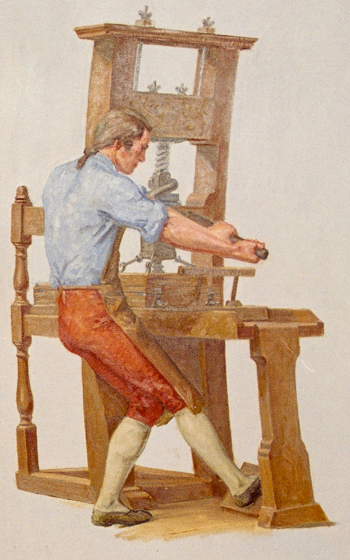
Patrick henry led the Virginia opponents of the Constitution drafted in 1787 to replace the Articles of Confederation, arguing that freedom of the press and other protections against government power were not guaranteed adequately - so James Madison promised amendments, won the ratification battle, and then convinced the First Congress to pass the Bill of Rights
Source: Architect of the Capitol, The First Federal Congress, 1789
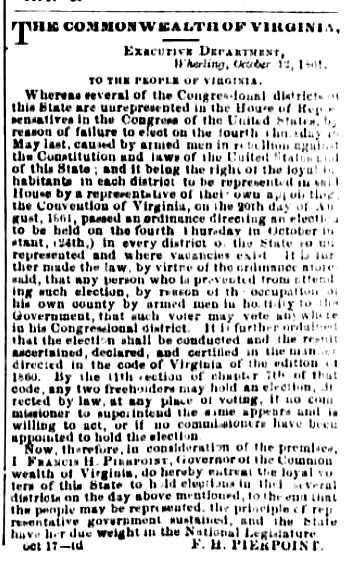
in October 1861, Gov. Francis Pierpont of the Restored Government of Virginia issued a special call for elections to the House of Representatives, since the normal May, 1861 elections had been cancelled
Source: "Chronicling America," Library of Congress, The National Republican (October 22, 1861)